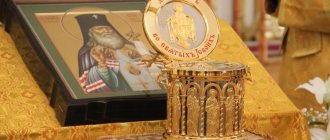A special day is approaching - April 30 - Radonitsa or Radunitsa. Our Slavic ancestors called this day Rodonitsa. There are other similar names for this day. Radonitsa is a day of special remembrance of the dead, a special memorial day. This day has been celebrated in many nations since ancient times, and Radonitsa is also recognized by Christianity. Radonitsa is the only day in the whole year when, according to Orthodox traditions, it is possible to light a candle in a church for someone who died unbaptized, a suicide, and other deceased relatives or loved ones, whose commemoration by the church on other days is not permitted. Such people are not recognized by the Orthodox Church as “theirs”, and finding help from priests if relatives want to help such a deceased person in some way often turns out to be almost impossible. We are talking not only about suicides, but also about people, for example, who drowned under unclear circumstances. About people missing and under unknown circumstances, about people whose body has not been found. About people who were not buried according to Christian customs. About the restless dead. We are also talking about people who were previously customary to be buried outside the cemetery - murderers, maniacs, rapists and others who were mired in sins and did not repent before death (“evil souls”). Sometimes priests (according to the apostolic rules) do not allow those who were reposed in their time and by their death, those who were baptized, who called themselves Christians during life, but who did not often go to church, to attend the funeral service. For example, if you didn’t go to church for six months before your death, you don’t have a funeral service. It is believed that this person also died in unbelief, a non-Christian, and therefore he is not “ours”, does not belong to our egregor. These are the rules of Orthodoxy, and it is not for you and me to judge them. The question is, what should family and friends do when they ask:
- “How to help a suicide?”
- “Is it possible to remember suicides?”
- “How to remember drowned people?”
- “He died unbaptized, but I am Orthodox - how to remember” and others.
Perhaps you will find the answer in this article, and you will be able to spend Radonitsa productively this year.
What is suicide from the point of view of Orthodoxy
From an Orthodox point of view, suicide is the most terrible sin. By depriving himself of the most precious gift - life, a person is forever deprived of repentance, and therefore - the Kingdom of God. There is no longer any possibility for him on earth to receive remission of sins; the spiritual temple is destroyed and trampled upon. The Bible treats suicide as a type of murder.
A person voluntarily ends a life that belongs not only to him, but also to God. The Lord gave it for spiritual development, prosperity, but not for destruction. “No one lives for us, and no one dies for ourselves... Whether we live or die, we are the Lord’s,” says the Apostle Paul in scripture.
Just in case, we recommend that you know about Orthodoxy’s attitude to the sin of masturbation.
Radonitsa to help restless souls
I will also note separately about restless souls, which are often those who died before their time, those who died, those killed, those who fell in battle, and others. With this ritual on Radonitsa, you can ask this soul itself what it needs for its repose. It often turns out that such a soul has some unfinished business, because of which it cannot find peace, and perhaps you are the only one who can help it. This may not be difficult for you, but it is very important for this soul. Do what keeps her going, finish this task for her, and it will become much easier for her. You can find out what is holding her in the described way only on Radonitsa.
So, now you know when you can remember suicides, unbaptized people, drowned people and others. You know that this is what Radonitsa or Radunitsa is for. You know how to help a suicide, how to remember a suicide, how to remember a drowned person. I will also add that you cannot write about all those who died not “as they should” in one article, and you cannot say unequivocally everything about what and with whom after death. Each case is unique and often requires an individual approach and consideration. But such a commemoration can be done on Radonitsa for any deceased person, without exception. If the article about Radonitsa was useful to you, I will be glad. Ask questions about Radonitsev's comments. Sincerely, magician Azal, author of articles and owner of the site “Magician on Magic”.
Post Views: 241
Share with friends on social networks:
Why don't funeral services be held for drowned people and suicides?
There is a rule of St. Timothy of Alexandria, according to which one cannot pray for suicides. Drowned people and other suicides who committed a mortal sin are people who apostatized from God’s commandments, became impoverished in spirit, and allowed the devil into their souls.
A person who has committed suicide completely loses faith in Divine Providence, without which nothing on earth can exist.
Those who decide to commit suicide by drowning in water or in any other way do not believe in Eternal Life, thereby offending God - the Creator and Redeemer. That is why they are not buried in churches, and are not remembered at Liturgies and memorial services.
Radonitsa to commemorate the drowned
If your deceased relative or friend drowned under unclear circumstances, or his body was not found and was not buried, and you want to help the soul of the drowned person, then also do not miss Radonitsa. If there is a grave, then go to Radonitsun’s grave. If the body was not found, then on Radonitsa you need to go to the body of water in which your drowned person drowned - a lake, river, sea. Or to that body of water that has a connection with that; for example, if you drowned in the Black Sea, but this sea is far from you, but you have the opportunity to go to the banks of the Dnieper, Dniester or another river flowing into it, then it will be easier and more convenient for you to go there to remember the drowned man. By the way, they also commemorate on Radonitsui other people who died without a body found and buried according to customs - if they disappeared in the mountains, then they go to the foot of the mountain, if in the forest, then to the forest, if in a swamp, then to the swamp, and so on. So, to remember the drowned man, they came to the reservoir in Radonitsyvo. It is possible to transfer food to the dead in two ways - with or without a boat; it depends on tradition and does not detract from the result itself.
- If you don’t have a boat, then first throw the petals of fresh flowers over the waves, then throw the shells of boiled eggs into the water, then put bread and honey into the water. At the same time, they think about the person and ask for news from him.
- If you have a boat, then put petals of fresh flowers in it, put a lighted candle, crumble the shells of boiled eggs, and also put bread with honey. If the drowned man smoked during his lifetime, then you can put a lit cigarette in the boat. Also, sometimes they put a note in this boat with the name of the drowned man, and in modern times, his photograph - it’s at your discretion.
Why exactly this “set”? It is believed that flower petals are placed so that the drowned person can hear you. The shells of boiled eggs are needed so that he can receive news from you and answer you (it’s like a “letter to the water king”). Bread and honey is what the dead crave to satisfy their hunger. According to the old custom, they did not go to the dead without bread and honey.
You can also pray for Radonitsa in the temple for such a dead person, or at home. You can also leave water, bread and honey for him at home, and light a candle. The best option is to light it in the evening on Radonitsukoster, as was said, and feed it that way. By the way, if on Navy Day it is preferable to throw ash branches into the fire to keep the dead warm, then yew branches are thrown on Radonitsa. If you don't find any, use existing ones. After the fire, go to bed. Perhaps the drowned man will come to you with news in a dream. Usually they “respond” to the ritual not on the same night, but it is believed that they will receive your message before the Mermaid Day and then they will be able to respond, give you news about how they are there and how you can help them, how to ease their posthumous fate In addition, in the evening before going to bed, place a lighted candle on the Radonitsa window - it will show the dead the way to your home, and will also drive away evil spirits that may come, taking the form of a dead person.
Is it possible to perform a funeral service for a hanged man?
A person who decides to get into a noose, from a Christian point of view, is a coward who in this way decided to get away from problems, illnesses, debts, and other troubles in life. Having decided on a terrible act, he admits his cowardice and refuses to bear a cross, even if not the easiest, but given by God.
Of course, there are exceptions to the general rules. A funeral service may be performed for a suicide if during his lifetime he suffered from mental disorders and was registered with the appropriate institution. A certificate to the diocese from the hospital in most cases solves the problem. This opportunity gives consolation to relatives who are trying with all their might “to do everything so that the soul feels good in the next world.”
But there is another side of the coin: the relatives of suicides, who had no mental disorders during their lifetime and took their own lives of their own free will, are trying by all means to “get” the necessary document in order to obtain a blessing for the funeral service. And when a prayer is offered up to the Lord in church, and it contains the words “...rest with the saints...”, an even greater sin is committed.
In an attempt to justify the act of suicide, people deceive themselves, the clergy, but above all, God. If prayer is performed in church, then in this case it will be to the detriment of both the deceased and his relatives.
LiveInternetLiveInternet
A special day is approaching - April 21 - Radonitsa or Radunitsa. Our Slavic ancestors called this day Rodonitsa. There are other similar names for this day. Radonitsa is a day of special remembrance of the dead, a special memorial day. This day has been celebrated in many nations since ancient times, and Radonitsa is also recognized by Christianity. Radonitsa is the only day in the whole year when, according to Orthodox traditions, it is possible to light a candle in a church for someone who died unbaptized, a suicide, and other deceased relatives or loved ones, whose commemoration by the church on other days is not permitted. Such people are not recognized by the Orthodox Church as “theirs”, and finding help from priests if relatives want to help such a deceased person in some way often turns out to be almost impossible. We are talking not only about suicides, but also about people, for example, who drowned under unclear circumstances. About people missing and under unknown circumstances, about people whose body has not been found. About people who were not buried according to Christian customs. About the restless dead. We are also talking about people who were previously customary to be buried outside the cemetery - murderers, maniacs, rapists and others who were mired in sins and did not repent before death (“evil souls”). Sometimes priests (according to the apostolic rules) do not allow those who were reposed in their time and by their death, those who were baptized, who called themselves Christians during life, but who did not often go to church, to attend the funeral service. For example, if you didn’t go to church for six months before your death, you don’t have a funeral service. It is believed that this person also died in unbelief, a non-Christian, and therefore he is not “ours”, does not belong to our egregor. These are the rules of Orthodoxy, and it is not for you and me to judge them. The question is, what should family and friends do when they ask:
- “How to help a suicide?”
- “Is it possible to remember suicides?”
- “How to remember drowned people?”
- “He died unbaptized, but I am Orthodox - how to remember” and others.
Perhaps you will find the answer in this article, and you will be able to spend Radonitsa productively this year.
Radonitsa to help a suicide.
Are suicides remembered? How and when to remember suicides? The priests of the Orthodox Church advise praying for such people on your own at home, but they consider this to be absolutely hopeless and, moreover, dangerous for the person himself who wants to help such a deceased person. Moreover, we are not talking about Radonitsa, but in general. “Of course, you can try to dare this home prayer feat. However, be sure to take a blessing from the priest, and if he refuses, do not be outrageous - this will not end well,” is the approximate answer. Orthodoxy has examples of suicides being forgiven for this terrible sin - there are several examples of a saint begging a suicide during his lifetime. Of course, the saint has a large reserve of God's mercy, which he himself has earned and which he can give in payment along with his fervent prayer for such a person at his own request. For example, Seraphim of Sarov, after begging a suicidal young man, fell ill for several months, but he knew what he was doing and he himself wanted to help the suicide.
Here’s an example I found in a cartoon, when the saved nuns prayed to their unbaptized infidel savior. The cartoon is humorous, but the point is that the nuns also have their own supply of God’s mercies, which they gave to him for his salvation. Whether he was happy about this fact - look and don’t take it seriously.
https://www.youtube.com/watch?feature=player_embedded&v=nX2GvFj7VBw
If we continue this topic seriously, then it is up to everyone to personally decide what to do with such a deceased person whom the church has abandoned. It is often advised to simply forget about them. Previously, such dead people were buried outside the village cemetery, in especially remote places. If the cemetery was located closer, then such people were buried, on the contrary, further away.
Moreover, they tried to avoid such places, and without special need not to go to that remote cemetery. Nowadays, suicides can be freely buried along with everyone else, which is not entirely correct. Why does this matter? Where the souls of suicides end up after death, to put it mildly, they are not entirely happy. The energy shell of the suicide, which remains with the body near the grave, also suffers greatly. Most of the emotions after death are distorted, simplified or die off altogether, and very often both the energy shell of the suicide and his soul “get angry”, are reborn into fallen creatures, become bestial or demon-like and can attack the living. The soul of a suicide, having realized its posthumous fate, really does not want to leave the earth, and, if possible, tries by hook or by crook to “catch on” to the earth. For example, she can inhabit a person passing by her grave, thus causing obsession, demonic possession. The energy shell is located near the grave of the suicide, and his soul can visit the grave, the place of life and death, only on this one day of the year - on Radonitsa. If this soul is not allowed to leave the places of its posthumous stay at all (for special offenses), then it can only hear the words, questions, prayers addressed to it on Radonitsa and be able to answer the questioner. Only one day a year, on Radonitsa! This is explained by the special energy of this day and the fact that the line between the “lower” parts of Navi and Yavi on Radonitsa is especially thin.
So, the decision is yours whether to help such a deceased person. But if you still decide to help a suicide or a drowned person, or an unbaptized person, then do not miss Radonitsa. Go to church on Radonitsa, pray for this soul, light a candle for the repose of this soul. You can take the prosphora and try to give communion to such a soul, leaving it on the grave.
The only note that I consider important for your understanding is this. The so-called evil souls do not remember at home, especially on Radonitsa! For example, if the deceased committed suicide at home (in your house or apartment where you live), then you should not leave food for him (bread, honey, etc.) in the same house. You should not “feed” him in the house; this is a special place for such a soul - the place of his death. Don’t make a mistake. The soul or energy shell will get stronger from the food offered to it, gain strength and can begin to torment the living, attack, “take out its anger” on those living in this house. In this case, you will have to expel her.
If your deceased relative or friend drowned under unclear circumstances, or his body was not found and was not buried, and you want to help the soul of the drowned person, then also do not miss Radonitsa. If there is a grave, then go to Radonitsun’s grave. If the body was not found, then on Radonitsa you need to go to the body of water in which your drowned person drowned - a lake, river, sea. Or to that body of water that has a connection with that; for example, if you drowned in the Black Sea, but this sea is far from you, but you have the opportunity to go to the banks of the Dnieper, Dniester or another river flowing into it, then it will be easier and more convenient for you to go there to remember the drowned man. By the way, they also commemorate on Radonitsui other people who died without a body found and buried according to customs - if they disappeared in the mountains, then they go to the foot of the mountain, if in the forest, then to the forest, if in a swamp, then to the swamp, and so on. So, to remember the drowned man, they came to the reservoir in Radonitsyvo. It is possible to transfer food to the dead in two ways - with or without a boat; it depends on tradition and does not detract from the result itself.
1. If you don’t have a boat, then first throw the petals of fresh flowers over the waves, then throw the shells of boiled eggs into the water, then put bread and honey into the water. At the same time, they think about the person and ask for news from him.
2.If you have a boat, then put petals of fresh flowers in it, put a lighted candle, crumble the shells of boiled eggs, and also put bread with honey. If the drowned man smoked during his lifetime, then you can put a lit cigarette in the boat. Also, sometimes they put a note in this boat with the name of the drowned man, and in modern times, his photograph - it’s at your discretion.
Why exactly this “set”? It is believed that flower petals are placed so that the drowned person can hear you. The shells of boiled eggs are needed so that he can receive news from you and answer you (it’s like a “letter to the water king”). Bread and honey is what the dead crave to satisfy their hunger. According to the old custom, they did not go to the dead without bread and honey.
You can also pray for Radonitsa in the temple for such a dead person, or at home. You can also leave water, bread and honey for him at home, and light a candle. The best option is to light it in the evening on Radonitsukoster, as was said, and feed it that way. By the way, if on Navy Day it is preferable to throw ash branches into the fire to keep the dead warm, then yew branches are thrown on Radonitsa. If you don't find any, use existing ones. After the fire, go to bed. Perhaps the drowned man will come to you with news in a dream. Usually they “respond” to the ritual not on the same night, but it is believed that they will receive your message before the Mermaid Day and then they will be able to respond, give you news about how they are there and how you can help them, how to ease their posthumous fate . In addition, in the evening before going to bed, place a lighted candle on the Radonitsa window - it will show the dead the way to your home, and will also ward off evil spirits that may come, taking the form of the dead.
I will also note separately about restless souls, which are often those who died before their time, those who died, those killed, those who fell in battle, and others. With this ritual on Radonitsa, you can ask this soul itself what it needs for its repose. It often turns out that such a soul has some unfinished business, because of which it cannot find peace, and perhaps you are the only one who can help it. This may not be difficult for you, but it is very important for this soul. Do what keeps her going, finish this task for her, and it will become much easier for her. You can find out what is holding her in the described way only on Radonitsa.
So, now you know when you can remember suicides, unbaptized people, drowned people and others. You know that this is what Radonitsa or Radunitsa is for. You know how to help a suicide, how to remember a suicide, how to remember a drowned person. I will also add that you cannot write about all those who died not “as they should” in one article, and you cannot say unequivocally everything about what and with whom after death. Each case is unique and often requires an individual approach and consideration. But such a commemoration can be done on Radonitsa for any deceased person, without exception.
source https://magomagii.ru/
https://poleznosti.mirtesen.ru/blog/43347417948/Rad...yts,-utoplennikov,-nekrescheny
Where and in what cases is permission issued for funeral services for suicides?
There are many examples in the practice of clergy when they have to perform funeral services for people who died a natural death, but who did not know God in their souls, who never visited a temple, who did not offer a prayer to the Lord, who did not repent.
Why does the church accept these people, but reject those who, perhaps impulsively, out of ignorance, committed the sin of suicide?
This question is asked by many of those who have suffered this terrible misfortune. And indeed, there are different situations. It’s one thing when a person killed himself voluntarily, another thing when he had no other choice.
When making decisions about funeral services for suicides, the church takes into account the reasons that prompted such a desperate step. Funeral services are held for the dead only in cases where suicide was committed unconsciously, in an inadequate mental state and through negligence.
To obtain permission for a funeral service, you need to contact the Diocesan Administration, write a petition to the ruling bishop, attaching the necessary documents.
Radonitsa or how to help a suicide
Are suicides remembered?
How and when to remember suicides? The priests of the Orthodox Church advise praying for such people on your own at home, but they consider this to be absolutely hopeless and, moreover, dangerous for the person himself who wants to help such a deceased person. Moreover, we are not talking about Radonitsa, but in general. “Of course, you can try to dare this home prayer feat. However, be sure to take a blessing from the priest, and if he refuses, do not be outrageous - this will not end well,” is the approximate answer. Orthodoxy has examples of suicides being forgiven for this terrible sin - there are several examples of a saint begging a suicide during his lifetime. Of course, the saint has a large reserve of God's mercy, which he himself has earned and which he can give in payment along with his fervent prayer for such a person at his own request. For example, Seraphim of Sarov, after begging a suicidal young man, fell ill for several months, but he knew what he was doing and he himself wanted to help the suicide. If we continue this topic seriously, then it is up to everyone to personally decide what to do with such a deceased person whom the church has abandoned. It is often advised to simply forget about them. Previously, such dead people were buried outside the village cemetery, in especially remote places. If the cemetery was located closer, then such people were buried, on the contrary, further away.
Moreover, they tried to avoid such places, and without special need not to go to that remote cemetery.
Nowadays, suicides can be freely buried along with everyone else, which is not entirely correct. Why does this matter? Where the souls of suicides end up after death, to put it mildly, they are not entirely happy. The energy shell of the suicide, which remains with the body near the grave, also suffers greatly (it is written about human energy bodies >> here <<). Most of the emotions after death are distorted, simplified or die off altogether, and very often both the energy shell of the suicide and his soul “get angry”, are reborn into fallen creatures, become bestial or demon-like and can attack the living. The soul of a suicide, having realized its posthumous fate, really does not want to leave the earth, and, if possible, tries by hook or by crook to “catch on” to the earth. For example, she can inhabit a person passing by her grave, thus causing obsession, demonic possession. The energy shell is located near the grave of the suicide, and his soul can visit the grave, the place of life and death, only on this one day of the year - on Radonitsa. If this soul is not allowed to leave the places of its posthumous stay at all (for special offenses), then it can only hear the words, questions, prayers addressed to it on Radonitsa and be able to answer the questioner. Only one day a year, on Radonitsa! This is explained by the special energy of this day and the fact that the line between the “lower” parts of Navi and Yavi on Radonitsa is especially thin (I wrote about this in more detail in the article “ Naviy Day ”).
So, the decision is yours whether to help such a deceased person. But if you still decide to help a suicide or a drowned person, or an unbaptized person, then do not miss Radonitsa. Go to church on Radonitsa, pray for this soul, light a candle for the repose of this soul. You can take the prosphora and try to give communion to such a soul, leaving it on the grave. On Radonitsa, do as you read in the article “Naviy Day” (the link to it is given just above) - go to the cemetery, bring food to the grave, and light a fire in the evening. But if on Navii Day they commemorate all deceased relatives, except for such “abandoned” deceased, then on Radonitsa they commemorate just such people.
The only note that I consider important for your understanding is this. The so-called evil souls do not remember at home, especially on Radonitsa! For example, if the deceased committed suicide at home (in your house or apartment where you live), then you should not leave food for him (bread, honey, etc.) in the same house. You should not “feed” him in the house; this is a special place for such a soul - the place of his death. Don’t make a mistake. The soul or energy shell will get stronger from the food offered to it, gain strength and can begin to torment the living, attack, “take out its anger” on those living in this house. In this case, you will have to expel her.
Prayers for those who committed suicide
Despite the complete fall from sin, the funeral service, there is hope for the Lord’s forgiveness. You can help with prayer the dead who find themselves in the following situations:
- was subjected to severe bullying, which prompted suicide - in such circumstances it is possible to receive God's forgiveness and be admitted to Paradise;
- if a child or teenager has committed violence from other people out of fear, the unformed psyche is accompanied by uncontrollable emotional outbursts. The child cannot account for his own actions;
- if you suffered from incurable cancer or another disease that tormented and caused severe pain.
Prayers for the suicidal person are said near a lit candle throughout the day. It is important to consciously pronounce every word of the funeral service, without haste or frivolity. Priests recommend reading the Optina prayers:
“Our Father, forgive the soul of Your servant (...), who has departed from this worldly life into Your possessions. Your servant (...) has strayed from the path of instruction of the Church. Your will is unknown to us. Do not make this prayer a sin on me. I accept Your will and trust in the salvation of my soul (...). Amen".
When a child interrupts his own life, to save his soul, a prayer is read for the person who committed suicide by his parents or close relatives:
“Merciful Lord, I beg you to forgive my little blood, an innocent child, for the sin of killing my own. Grant him remission of this sin and protect his soul. I ask You for him, give his soul peace. Amen".
If the parents were unable to cope with the difficult trials of life, then it is better for blood relatives to ask forgiveness for them through prayer and funeral services:
“Our merciful Father, I ask you to forgive my parent for his sinful act, for a terrible and difficult circumstance forced him to commit the sin. Do not torment his soul in terrible torment, but grant redemption. Please forgive me this prayer and show the way to Paradise for my parent. Amen".
The sin of those who committed suicide and their funeral service is a terrible offense. It is not possible to save those who have committed a bad act. But leading a righteous earthly life, a patient, persistent attitude towards the trials given by God gives the soul the opportunity to get to Paradise.
Special rules for suicide funerals
There are a number of restrictions for funerals of people who have committed suicide. Moreover, all these things are among the main ones in the traditions for the funeral of ordinary people. Thus, a funeral service is not provided for suicides, such a person is buried only on the third day after death, it is not customary to mourn a suicide, it is also forbidden to kiss the deceased goodbye, the magpie is not performed for a suicide, and there is no funeral service. Everyone who transgresses these prohibitions will themselves be held accountable before the Lord God. It is worth noting that there are exceptions - those suicides who repented before death can be buried in the cemetery. It is also important to take into account that those who killed themselves through negligence cannot be classified as suicides. Restrictions do not apply to such deceased persons.
Exception case
Yes, for loved ones this realization brings horror. But this is how the Lord created this world: He endowed every person with free will, and we have the right to choose the image of our actions.
There is, however, one exception in this case: if the suicide was committed by a mentally ill person. For example, a person suffering from schizophrenia. However, in most parishes the priest will rightly demand evidence that the deceased actually had serious mental disorders. In rare cases of such a plan, a funeral service may be scheduled. And the deceased can be remembered.









